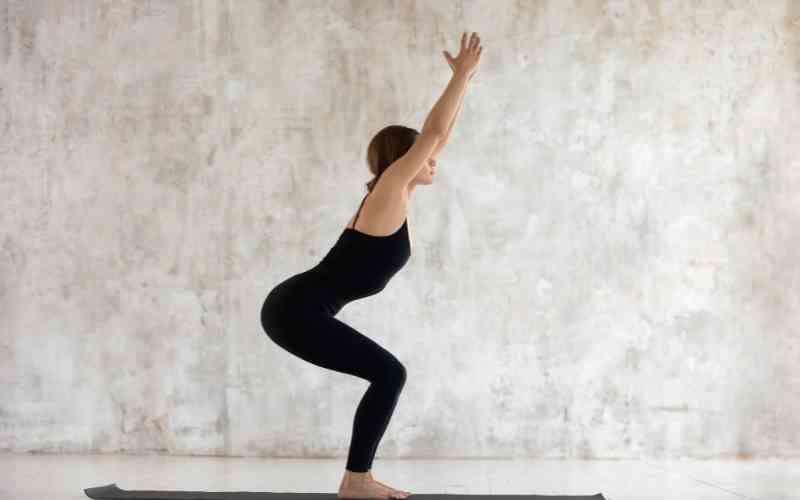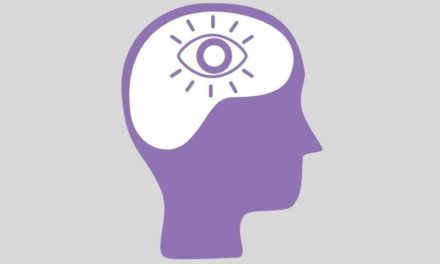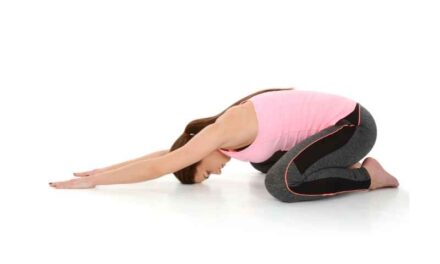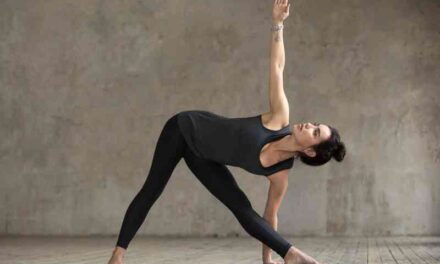Utakatasana, also known as the Chair Pose or Fierce Pose, is a standing asana in Hatha Yoga that engages the muscles of the legs, back, and core, while also improving focus and balance. The name Utakatasana is derived from two Sanskrit words, “utkata” meaning “fierce” or “powerful,” and “asana” meaning “pose” or “posture.” In this blog post, we will explore the benefits, steps, and variations of Utakatasana.
Benefits of Utakatasana
- Strengthens the legs: The primary muscles engaged in the Chair Pose are the quadriceps, hamstrings, and glutes, which help to strengthen and tone the legs.
- Tones the core: The core muscles are engaged as we maintain the balance in this pose. This helps to tone the abs and obliques.
- Improves posture: As the Chair Pose involves lifting the chest and keeping the back straight, it helps to improve posture.
- Increases flexibility: The Chair Pose stretches the muscles of the hips, thighs, and calves, helping to increase flexibility.
- Develops focus and balance: This pose requires concentration and balance, which helps to improve focus and balance.
Steps to perform Utakatasana
- Begin in Tadasana or the Mountain Pose, standing with your feet hip-distance apart and your arms at your sides.
- Inhale and raise your arms above your head, keeping your palms facing each other.
- Exhale and bend your knees, as if you were sitting in an imaginary chair. Ensure that your knees are over your ankles and that your thighs are parallel to the floor.
- Engage your core muscles by pulling your navel towards your spine and lifting your chest.
- Hold the pose for five deep breaths, then release on an exhale and return to Tadasana.
Variations of Utakatasana
- Twisted Chair Pose: From Utakatasana, exhale and bring your hands to your heart in a prayer position. Twist your torso to the right, hooking your left elbow on the outside of your right knee. Hold for five breaths, then release and repeat on the other side.
- Extended Chair Pose: From Utakatasana, exhale and bring your hands to your heart in a prayer position. Inhale and lift your left leg up behind you, keeping your chest lifted and your gaze forward. Hold for five breaths, then release and repeat on the other side.
- Garudasana (Eagle Pose) into Utakatasana: From Tadasana, bend your knees and cross your right thigh over your left thigh, hooking your right foot behind your left calf. Extend your arms in front of you, crossing your right arm over your left arm and bringing your palms together. Hold for five breaths, then release and repeat on the other side. On your next inhale, come into Utakatasana and hold for five breaths.
Precautions
- Avoid this pose if you have knee or ankle injuries.
- If you have low back pain, avoid this pose or perform it under the guidance of a yoga teacher.
- Pregnant women should avoid this pose, or perform it with modifications under the guidance of a yoga teacher.
In conclusion, Utakatasana is a powerful and energizing pose that offers numerous physical and mental benefits. As with any yoga pose, it is important to practice with awareness and listen to your body. With regular practice, Utakatasana can help to improve strength, flexibility, balance, and focus, making it a valuable addition to any yoga practice.





